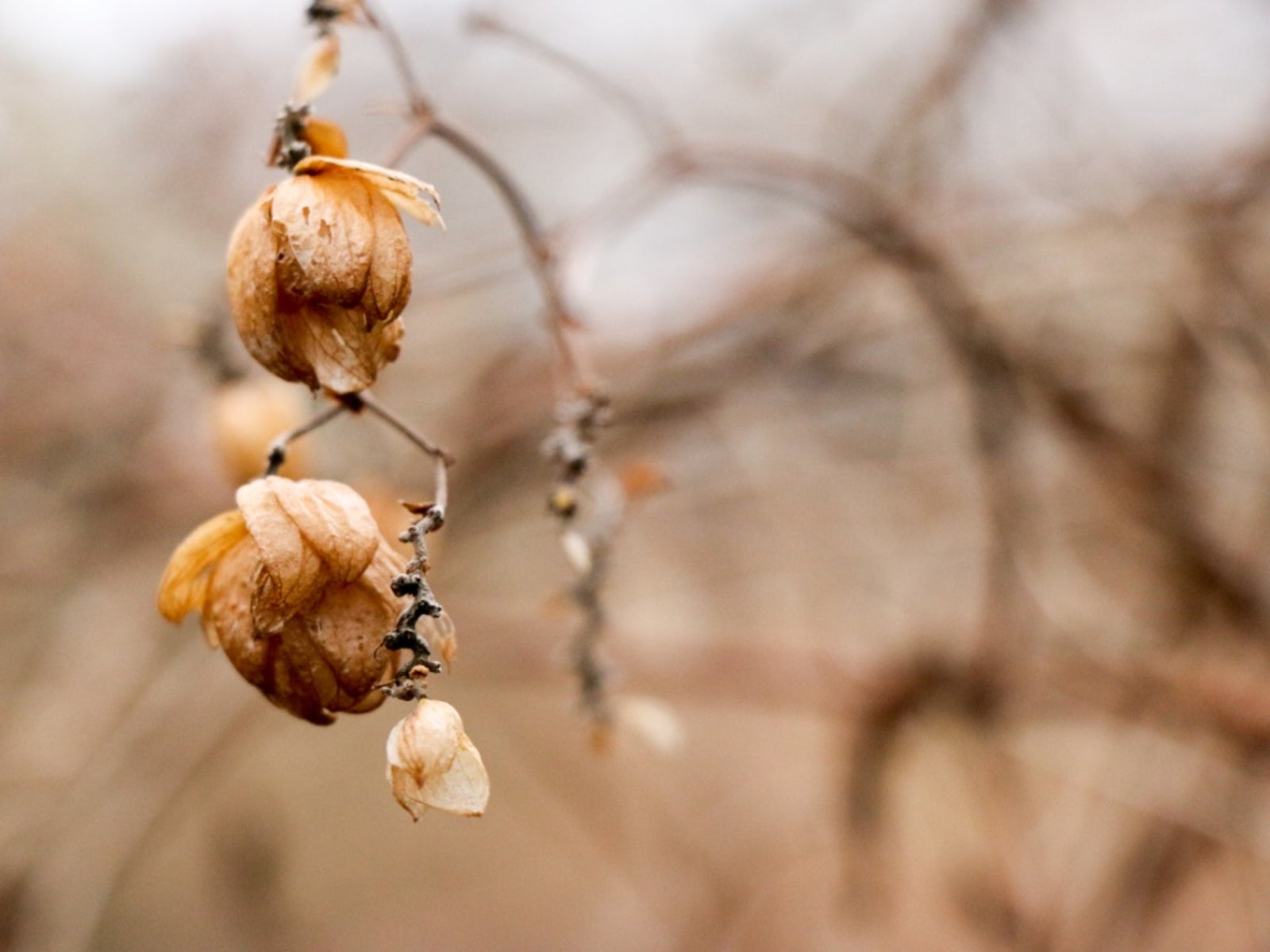Growing Hops In Winter: Information On Hops Winter Care


If you're a beer lover, you know the importance of hops. Home beer brewers need a ready supply of the perennial vine, but it also makes an attractive trellis or arbor covering. Hops grow from a perennial crown and cuttings are made from the bines or shoots. Hops plants are hardy in USDA growing zones 3 to 8. Keeping the crown alive during the cold months requires a little protection.
Winterizing hops plants is easy and fast but the small effort will protect the roots and crown and ensure new sprouts in spring. Once you understand how to winter over hop plants, these attractive and useful vines can be yours to use and enjoy season after season.
Hops Plants Over Winter
Once temperatures get below freezing, hops plant leaves fall off and the vine dies back. In temperate zones, the roots and crown rarely receive a lethal freeze, but it's best to be safe and protect the growth zone during the cold season. This is especially important where freezes are sustained and the winter is long.
With proper preparation, growing hops in winter are hardy to minus -20 F. (-20 C.) and will regrow in spring. The new sprouts in spring are very sensitive to frost, however, and can be killed if frozen overnight. Therefore, hops winter care should extend into spring in case of late cold snaps.
How to Winter Over Hop Plants
Hops have a taproot that can extend 15 feet (4.5 m.) into the ground. This part of the plant isn't threatened by cold weather, but the peripheral feeder roots and crown of the vine can be killed. The top roots are only 8 to 12 inches (20.5 to 30.5 cm.) below the surface of the soil.
A heavy layer of organic mulch at least 5 inches (13 cm.) thick helps protect the roots from freezes. You can also simply use a plastic tarp for winterizing hops plants when the greenery has died back.
Before you mulch, cut the vines back to the crown. Wait until the first frost when you see the leaves dropping off so the plant can gather solar energy as long as possible to store in the roots for the next season. The vines tend to sprout easily, so don't leave them to compost on the ground.
Sign up for the Gardening Know How newsletter today and receive a free copy of our e-book "How to Grow Delicious Tomatoes".
If you want to start another generation of hops, place cut stems around the base of the plant and then cover them with the mulch. Pull away the mulch when all danger of frost has passed. Not much activity is happening to grow hops in winter, as the plant is dormant. This easy method will help your hops plants overwinter and produce a delicious homebrew.

Bonnie Grant is a professional landscaper with a Certification in Urban Gardening. She has been gardening and writing for 15 years. A former professional chef, she has a passion for edible landscaping.